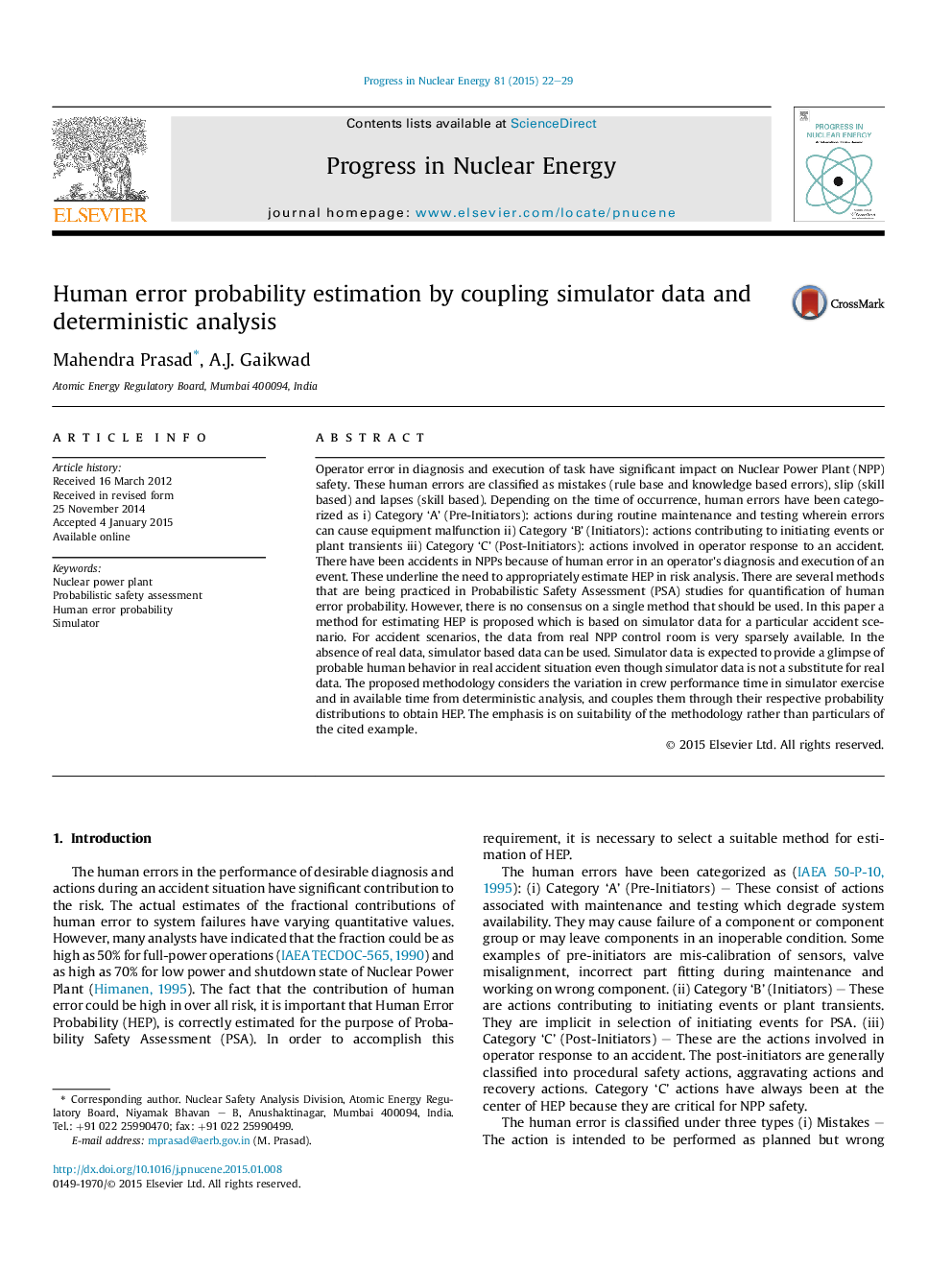| Article ID | Journal | Published Year | Pages | File Type |
|---|---|---|---|---|
| 8085381 | Progress in Nuclear Energy | 2015 | 8 Pages |
Abstract
Operator error in diagnosis and execution of task have significant impact on Nuclear Power Plant (NPP) safety. These human errors are classified as mistakes (rule base and knowledge based errors), slip (skill based) and lapses (skill based). Depending on the time of occurrence, human errors have been categorized as i) Category 'A' (Pre-Initiators): actions during routine maintenance and testing wherein errors can cause equipment malfunction ii) Category 'B' (Initiators): actions contributing to initiating events or plant transients iii) Category 'C' (Post-Initiators): actions involved in operator response to an accident. There have been accidents in NPPs because of human error in an operator's diagnosis and execution of an event. These underline the need to appropriately estimate HEP in risk analysis. There are several methods that are being practiced in Probabilistic Safety Assessment (PSA) studies for quantification of human error probability. However, there is no consensus on a single method that should be used. In this paper a method for estimating HEP is proposed which is based on simulator data for a particular accident scenario. For accident scenarios, the data from real NPP control room is very sparsely available. In the absence of real data, simulator based data can be used. Simulator data is expected to provide a glimpse of probable human behavior in real accident situation even though simulator data is not a substitute for real data. The proposed methodology considers the variation in crew performance time in simulator exercise and in available time from deterministic analysis, and couples them through their respective probability distributions to obtain HEP. The emphasis is on suitability of the methodology rather than particulars of the cited example.
Related Topics
Physical Sciences and Engineering
Energy
Energy Engineering and Power Technology
Authors
Mahendra Prasad, A.J. Gaikwad,
